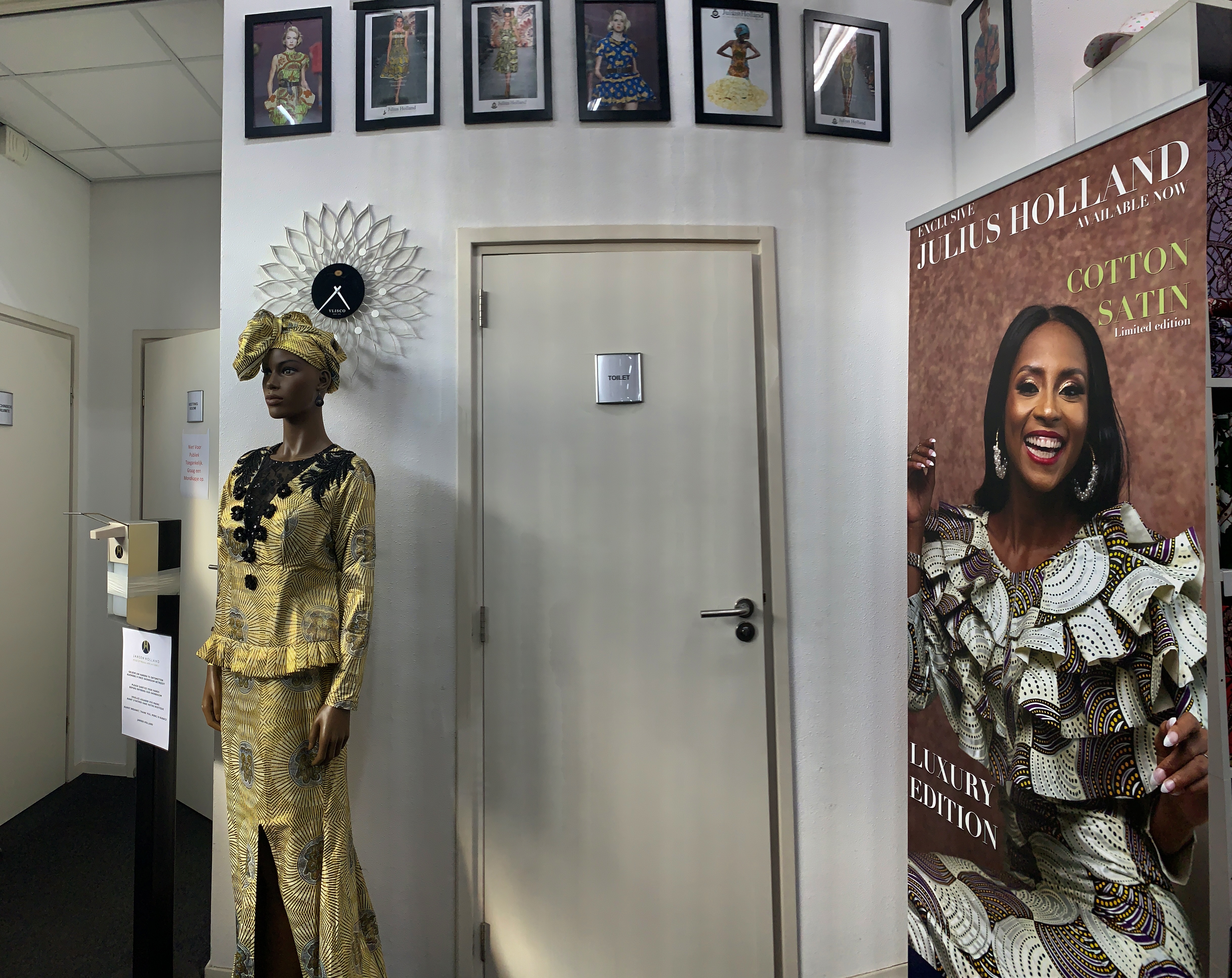Accession card
Description
A display section at the Vlisco shop space in Helmond, The Netherlands.
The clearly 'not-white' non-living mannequin, decked up in African cloth 'Made in Holland' is placed at the end of the factory space between the sanitizer and the toilet. Above the toilet door are photo frames carrying magazine covers and featured media showcasing Vlisco fabrics worn by living 'white' models.
I spent many minutes staring at the display in horror, at the non-chalance and ignorance of what seems like a 'small' choice that this textile giant made. An extra minute of thought would be enough to understand the many layers of communication that a display choice carries with it. This is even more interesting because the factory and shop spaces are loaded with hundreds of thousands of yardages of brightly printed fabric termed as 'Dutch Wax'. The target customers of this company's textiles are the peoples of the Africas and the those of African origins, living in various parts of Europe. The fabrics are replications of various textile traditions of diverse African communities that are made in Holland, and sold back to them. When communities were colonised, their resources and materials became part of the coloniser's acquisition process. Raw materials grown from the nothingness of soil by communities were acquired by force, transported back to European factories, made into products using cheaper, faster factory processing, and sold back to the very people who made the raw materials. The coloniser decideed when the colonised would be producers and when they would be consumers. Either way, this was to aid the coloniser. In the process of acquiring materials, the systems of intra-community production processes began to dissolve.
One might question how rampant 'unofficial' colonisation is in 2022, and how easily textiles have resorted to being the 'medium' for it. When communities were colonised, their resources and materials became part of the coloniser's acquisition process. Raw materials grown from nothing by communities were acquired, transported back to European factories, made into products using cheaper, faster factory processing, and sold back to the very people who made the raw materials. The coloniser decideed when the colonised would be producers and when they would be consumers. Either way, this was to aid the coloniser. In the process of acquiring materials, the systems of intra-community production processes began to dissolve.
For many of these African communities, these textiles carry meanings far beyond the understanding of the Dutch. This textile giant that employs designers and marketeers from all over Europe, and yet, not a single person from commuities whose textiles are being 'adapted', and 'adopted' for them. There is no acknowledgement.
Textiles are not merely 'commodities' for communities whose cultures are shaped around the material, its making, its intention of making and the sanctity of its usage. These textiles are markers and carriers of community identitites, beliefs, traditions and their collective being. So what happens, when Vlisco, for instance, machine makes Ghanaian funerary textiles and sends them back to Ghana to be used for a ceremony of community importance. Vlisco cannot read these textiles in the same manner. For them it is a business, an economic opportunity, a 'historical' phenomenon. Who is thinking about the 'historical' phenomenon that shaped African communities?
What happens, when a country with not nearly as much economic power as the Dutch, is given the choice for a 'cheaper' cloth that is representative of the otherwise labour and time intensive hand production process of the home community? What happens when textiles are produced for cultural purposes of a previously (offically)colonised community by the coloniser themselves? What does this do for the younger generations back home in the Africas and the diaspora? How infectious is this hardwiring, passed along hidden in the subtelty of textile trade?
How far did this acquisition go?
Code
Date
Location
Credits / copyrights
Photograph by Abhinanda Lahiri, Helmond 2022
Title
Medium
- Image



